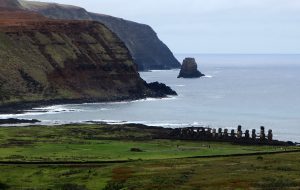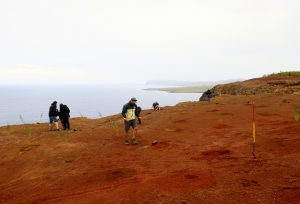
Hanga Roa, Chile, Nov 3 (EFE).- Easter Island seeks to become self-sustainable and waste-free by means of a comprehensive plan that also addresses environmental education, the island’s mayor said.
The plan aims to raise awareness in a “wide-ranging” way to build a self-sustainable future for the island’s community, Pedro Edmunds Paoa told EFE during an interview.
The plan is nicknamed “AMOR” (love, in Spanish), which is an acronym of its key principles: self-sustainability, creating enduring improvements, offering development opportunities, and respecting the natural ecosystem.
Located some 3,800 km (2,360 mi) off Chile’s western coast, Easter Island, also known as Rapa Nui in the local language, is one of the world’s most coveted tourist destinations, known for its 887 monumental statues, called moai.
However, its beaches are severely polluted with plastic that floats its way onto the island, and Rapa Nui also has a severe waste management problem.
To make matters worse, 66.8 percent of the island suffers some degree of erosion, and rising sea levels threaten its shores.
The goal of “AMOR” is to “attain self-sustainability and preserve our natural resources” by means of “changing our way of living, taking care of our health and respecting each other,” Paoa said.
The 20-year plan was launched in 2014 and has become part the slogan of the island’s government – “Rapa Nui con AMOR” (Rapa Nui with love).
The plan took center stage in the First Summit of Local Governments of Chile, which took place on the island last week.

One of the key elements of the plan is to provide environmental education to children, by means of the Rapa Nui Environmental Education Network.
The network also organizes beach cleanup campaigns and presentations to show people how to reuse and recycle, and even how to create their own vegetable gardens.
The plan also includes the construction of a waste management plant that will take advantage of 90 percent of the waste produced on the island through recycling, reusing, worm composting and incineration.
To fight erosion, which especially affects the region surrounding Poike volcano, 47.8 hectares (118 acres) have been reforested, mainly with casuarina equisetifolia or Australian pine trees.
Attaining self-sustainability also depends on limiting the negative impacts of tourism, as the island has 7,750 residents and a territory of just 163.6 square km (63 sq. mi), but was visited by some 120,000 tourists in 2017.
This is why visitors are only allowed to stay on Rapa Nui for 30 days, while the Chilean government has created a Demographic Burden Council, which includes the island’s mayor, to seek to avoid excessive population growth.
